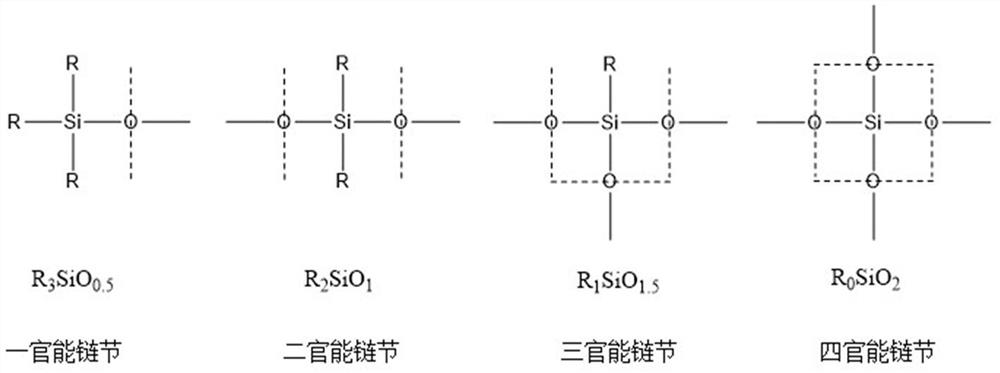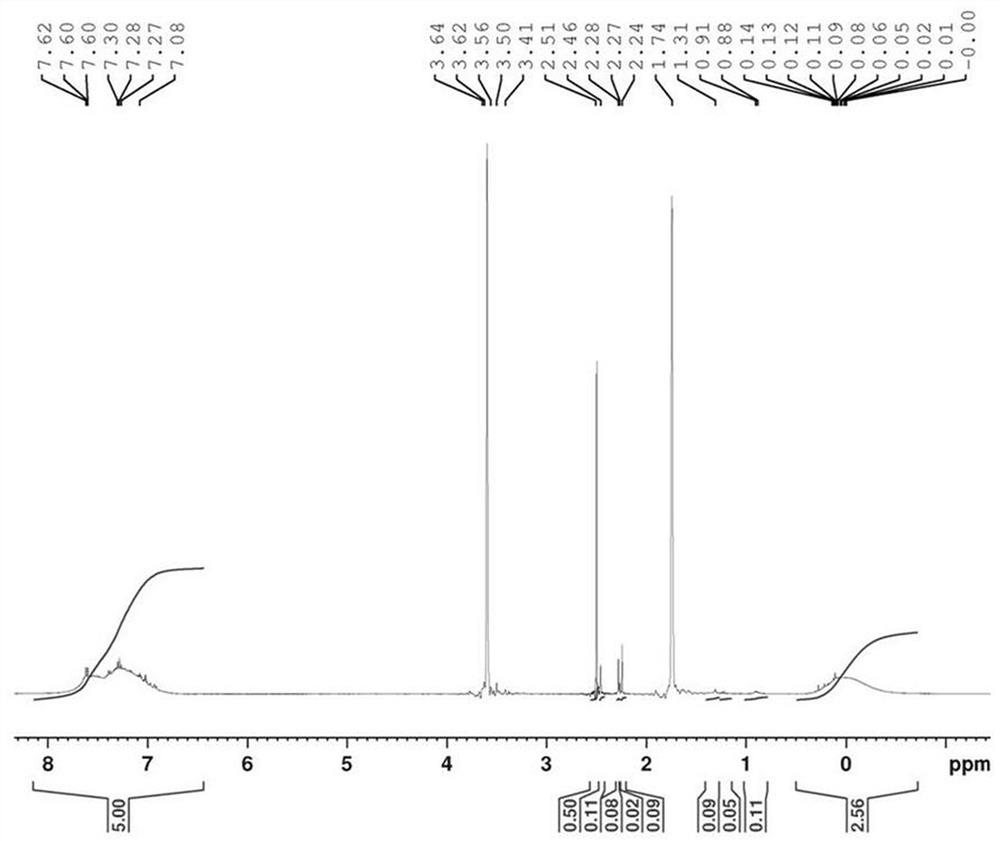A kind of test method of degree of substitution of condensed silicone resin
A testing method and technology of silicone resin, applied in the field of silicone resin, can solve problems such as unfavorable product quality control, silicone resin structure analysis, inability to fully represent the degree of substitution of silicone resin, etc., and achieve the effect of facilitating product quality control
- Summary
- Abstract
- Description
- Claims
- Application Information
AI Technical Summary
Problems solved by technology
Method used
Image
Examples
Embodiment 1
[0057] A method for testing the degree of substitution of condensed silicone resin, comprising the following steps:
[0058] S1. After pre-processing the sample to be tested, measure to obtain the mole fraction of the inactive substituent group R, the mole fraction of the active group X, and the ratio R of the amount of the active group X to the inactive substituent group R. X / R ;
[0059] Wherein, the pretreatment and determination of the sample to be tested adopts the prior art;
[0060] S2. After pre-processing the sample to be tested, measure it to obtain the mass fraction w of silicon element in the total mass of the silicone resin Si ;
[0061] Wherein, the pretreatment and determination of the sample to be tested adopts the prior art;
[0062] S3. Bring the parameters obtained in steps S1 and S2 into formula (1) to obtain the degree of substitution P of the condensed silicone resin of the sample to be tested R / Si ;
[0063]
[0064] In formula (1), P R / Si is th...
Embodiment 2
[0086] Based on Example 1, in this example, sample 1 to be tested is taken to test the degree of substitution, so as to further illustrate the technical solution of the present invention.
[0087] Take 1 drop of 0.5 mL of the sample to be tested on a clean and dry glass slide, and let it dry for 24 hours in a ventilated environment of (25±15) °C; The pressure is not higher than 100Pa, and it is dried for 12h. Take (20 ± 2) mg of the sample to be tested after drying and dissolve it in 0.5 mL of deuterated tetrahydrofuran, and send the sample for 1 H NMR test (results such as image 3 shown);
[0088] Taking the sample solution to be tested without adding tetramethylsilane as the internal standard, and using the solvent peak as calibration, the mole fraction of each inactive substituted group R, the mole fraction of active group X, the active group calculated by the spectrum The ratio R of the amount of X to the amount of the non-reactive substituent group R X / R .
[0089] ...
Embodiment 3
[0091] Based on Example 1, in this example, the sample 2 to be tested is taken to test the degree of substitution, so as to further illustrate the technical solution of the present invention.
[0092] Take 40 mg of sample 2 to be tested in a dry NMR tube, and gradually dissolve the sample to be tested in 0.5 mL of deuterated ortho-dichlorobenzene by solvent replacement. 1 H NMR test;
[0093] Taking the sample solution to be tested without adding tetramethylsilane as the internal standard, and using the solvent peak as calibration, the mole fraction of each inactive substituted group R, the mole fraction of active group X, the active group calculated by the spectrum The ratio R of the amount of X to the amount of the non-reactive substituent group R X / R .
[0094] Take 20g of sample 2 to be tested in a dry polytetrafluoroethylene beaker with a diameter of 80mm, in a ventilated environment of (25±15) ℃, let it stand for drying for 24h; set the temperature of the electric blas...
PUM
 Login to View More
Login to View More Abstract
Description
Claims
Application Information
 Login to View More
Login to View More - R&D
- Intellectual Property
- Life Sciences
- Materials
- Tech Scout
- Unparalleled Data Quality
- Higher Quality Content
- 60% Fewer Hallucinations
Browse by: Latest US Patents, China's latest patents, Technical Efficacy Thesaurus, Application Domain, Technology Topic, Popular Technical Reports.
© 2025 PatSnap. All rights reserved.Legal|Privacy policy|Modern Slavery Act Transparency Statement|Sitemap|About US| Contact US: help@patsnap.com



